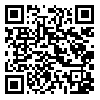BibTeX | RIS | EndNote | Medlars | ProCite | Reference Manager | RefWorks
Send citation to:
URL: http://tumj.tums.ac.ir/article-1-217-en.html
Choanal atresia was first described by Roeder in 1755.1 Choanal atresia is the narrowing or obstruction of the posterior nasal fossa. This anomaly could be congenital or acquired. Most patients are female.2 Choanal atresia might be isolated or associated with other anomalies like CHARGE syndrome and 20-50% of congenital cases have this company.3 Choanal atresia could be unilateral or bilateral while bilateral cases are emergent surgical conditions, unilateral cases are more frequent and mostly right-sided. Choanal atresia may be osseous, membranous or mixed.2 The definite treatment for choanal atresia is surgery and transpalatal, transseptal and transnasal (with endoscope) are the three preferable approaches.3 The medical records of fifty-four patients diagnosed with choanal atresia and admitted in Amiralam university hospital during the years 1998 to 2010 were evaluated. The patients were 2 to 29 years old with a mean and median age of 12.4 and 12, respectively. Female to male ratio was 2:1 and unilateral to bilateral involvement ratio was 1.9:1. Among unilateral cases, 19 cases had right-sided involvement. Forty cases had mixed, 13 had osseous, and one of them had membranous choanal atresia. Five patients had undergone transplatal surgery and the rest had their choanal atresia repaired by endoscopic approach. 80% of the cases had revisited for symptoms of nasal obstruction among which 18% had bilateral obstruction and presented with cyanosis and 64% had rhinorrhea. In comparison to similar studies, our patients had a higher mean age. This could be due to late referral, the patients' unfamiliarity with the symptoms and inadequacy of specialized treatment centers. Transpalatal approach was the most common surgical approach till late 80s as it provided better access due to the provision of a wider opening. Providing direct access to the surgical field and causing the least trauma to the site, endoscopic approach has been the most preferable option during the last two decades. In this approach, the exact site of resection can be determined and surgical safety will be increased.4 Use of stents in the surgery of choanal atresia is still controversial. Some authors believe in the prevention of recurrence with stents while some think about higher probability of infection and scar.5 Regarding the mentioned issues above, more research is needed to find the best surgical approaches and techniques for the early detection and treatment of choanal atresia.
| Rights and permissions | |
 |
This work is licensed under a Creative Commons Attribution-NonCommercial 4.0 International License. |





